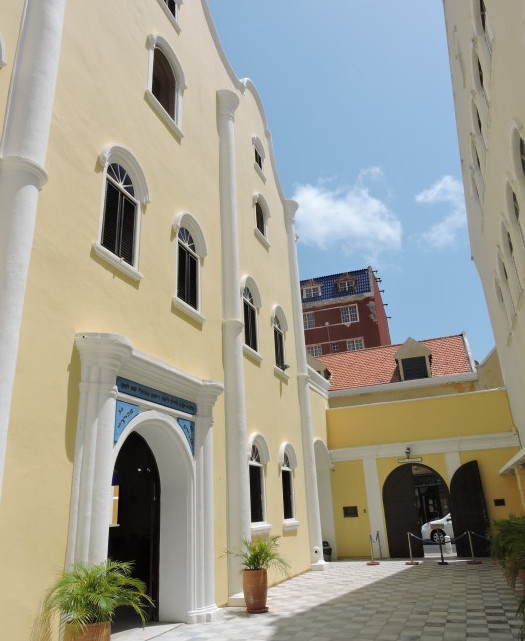From the early 1650’s, the first Jewish settlers came to Curaçao and established the Mikve Israel, (Hope of Israel) congregation. Sephardic Jews originating from Spain and Portugal came to Curaçao from Holland to flee the Spanish Inquisition, seeking a new home where they were free to practice their faith. Within a generation, they gained a strong banking, shipping and commerce influence on the island. By 1732, the Mikvé Israel- Emmanual Synagogue was built in Willemstad, and remains the oldest synagogue in the Western Hemisphere in continuous use today. Mikvé Israel-Emmanuel claims to own 18 Torah scrolls that are over 300 years old, some of which have been brought by the same men who fled the Inquisition in the late 1400s and founded the community in Curaçao.
Fast forward to the late 1920’s when Ashkenazi Jews began immigrating to Curaçao from Eastern Europe as part of a greater migration to the New World. After several decades, they became very prosperous selling goods from the Sephardic wholesalers on the island. They formed their own Orthodox congregation with a synagogue in Scharloo that was consecrated in 1959, and later moved from there to a comtemporary synagogue built in 2006, outside of the city in Mahaai. The Jewish community in Curaçao held a key role in helping their fellow man during the Second World War, one of the darkest periods in Jewish history. Many gave their lives for the war efforts both locally and abroad. One of the most notable was George Maduro, who fought heroically in the Netherlands. Madurodam in The Hague, a city park with miniatures of Holland’s landmarks, was built in his memory.
This little island has taken a pivotal role in shaping the Jewish landscape in the Western Hemisphere, and has proven tenfold that the smallest can often make the biggest difference.
Did you know?
Three reasons why there is sand on the floor of the Mikvé Israel-Emmanuel Synagogue
1. The synagogue embraces the tradition of many ancient Spanish and Portuguese synagogues, where the Sephardic Jews place sand on the floor to remind them of the 40 years of wandering in the Sinai desert in the journey made by their forefathers from Egypt to the Promised Land.
2. The first Jewish settlers to the island were originally from Spain and Portugal, who fled to Holland because of religious persecution during the Spanish Inquisition. At that time, many worshippers placed sand on the floors of their secret places of worship to muffle the sound of their footsteps and to avoid getting discovered and often put to death. After settling in Curaçao, the congregation chose to place the sand on the floor of the synagogue as a reminder of the courage and devotion of their forefathers.
3. The sand was placed on the floor of the synagogue as a symbol of the Jewish scripture that says, “I will multiply your seed as the sands of the seashore and the stars in the heavens,” (Genesis 13:16).












